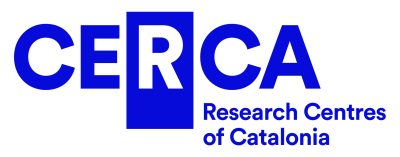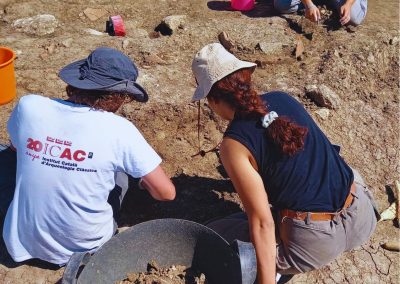
Several members of the ArPA-LIRA research group at ICAC have traveled to the Grevena area in Greece to collaborate on an archaeological excavation and survey campaign in the village of Agios Georgios (Central Macedonia).
The fieldwork is part of the Grevena Archaeological Project (GAP), driven by the Ephorate of the Antiquities of Grevena, in which the ArPA-LIRA research group is collaborating to study and analyze marble finds in the Agios Georgios area and nearby villages, under the direction of Simona Perna and the participation of Laura Galan and Hugo Feliu, also from ArPA (with the support of SGR-2021-1365 ArPA-LIRA), and Owain Morris (an independent researcher and deputy director of the intervention).
The modern village of Agios Georgios, part of the municipality of Grevena in Western Macedonia, Greece, is approximately a 30-minute drive from the city of Grevena, the capital of the homonymous regional unit. Surrounded by mountains and rivers, including the Greveniotikos, which flows into the Alakmon River, this region has particular archaeological interest. Evidence of human presence here dates back to the Neolithic period and extends to the Ottoman era and beyond, as documented by variously identified necropolises, unspecified building structures, and sporadic discoveries of ceramics, metals, and stone.
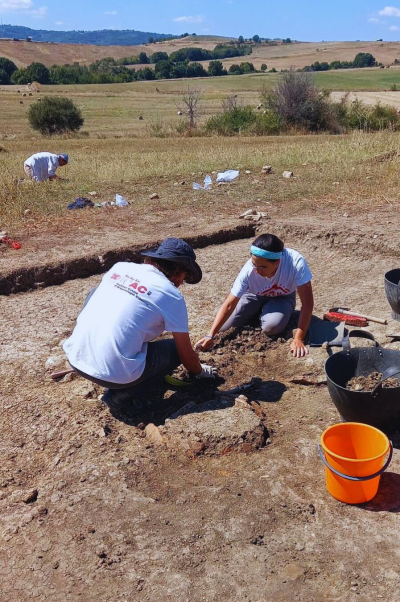
The landscape is dominated by a nearby hill, Agios Nikolaos, which has previously provided intriguing evidence of human activity. Ayios Georgios and its surroundings have been the focus of recent archaeological research campaigns and fieldwork promoted by the Ephorate of the Antiquities of Grevena, often significantly involving the GIAP research group from ICAC.
This new adventure follows the successful archaeological excavations and fieldwork carried out in the summers of 2021 and 2022, which led to the discovery of a late Roman wall and several pieces of marble in the vicinity known as Agros Batara, near Arsalia, approximately 2.4 kilometers from the village of Agios Georgios (Grevena).
The 2023 archaeological excavation will focus on two 5×5-meter test trenches to the west and north of the previously discovered Roman wall, with the aim of assessing its direction, and boundaries and uncovering other possible structures.
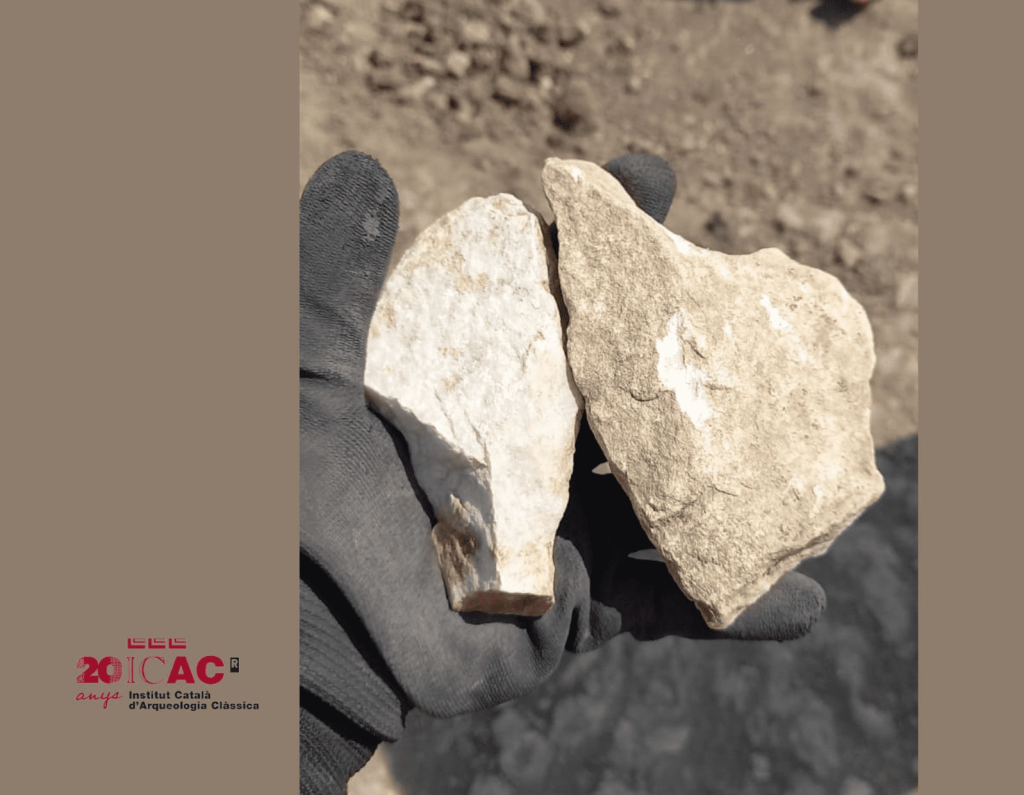
The presence of numerous findings, including ceramics spanning from the late Hellenistic period to the late Roman and Ottoman periods, fragments of dolia, and construction materials such as tiles and bricks, suggests the presence of a rural dwelling or villae. Most of these artifacts likely belong to the Roman phase (1st century AD to 5th century AD).
Further confirmation of this hypothesis comes from the recent discovery of several mosaic tiles during the first week of fieldwork. Ongoing excavations have yielded more marble pieces, architectural elements’ remains, and semi-finished products, in line with evidence from previous campaigns: stones belonging to a destroyed wall in the excavated trench, several marble pieces formed by construction remnants (chips), and semi-finished pieces.
Fieldwork will be complemented by the analysis of marble finds preserved in Ephorate’s warehouses. These items will be cataloged, drawn, weighed, and interpreted. The overall results will be presented in a publication.
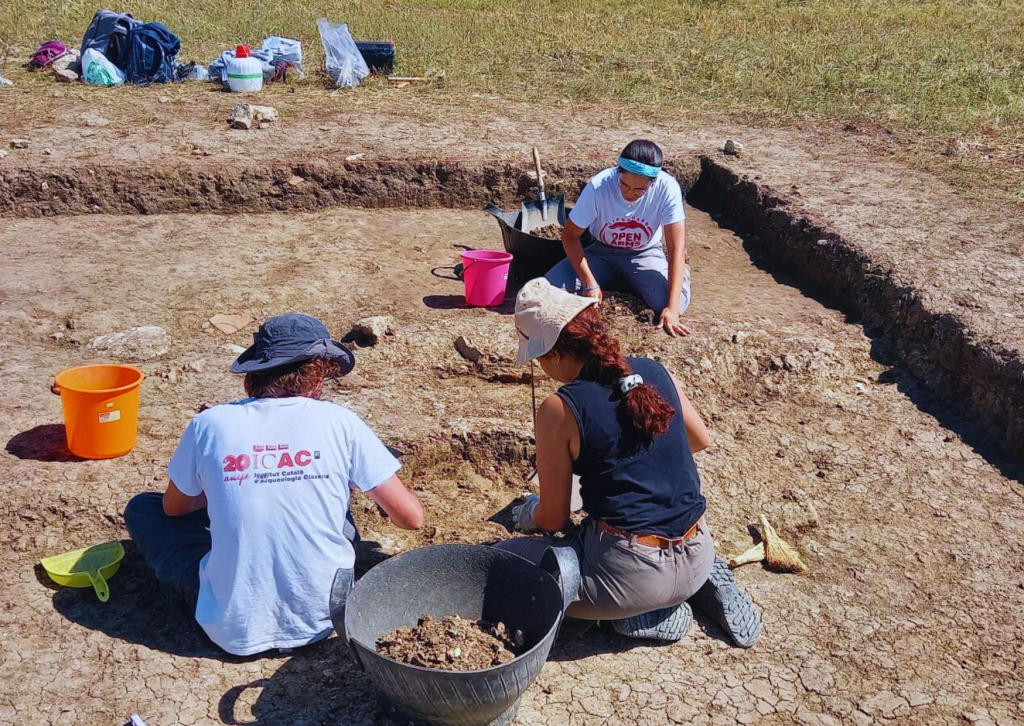
About the Catalan Institute of Classical Archaeology (ICAC-CERCA)
The Catalan Institute of Classical Archaeology (ICAC-CERCA) is a CERCA center established as a consortium in 2003 by the Government of Catalonia and the Rovira i Virgili University. It is a leading institution in the research and conservation of archaeological heritage in Catalonia. Its headquarters are located in Tarragona, a city recognized as a UNESCO World Heritage Site in the year 2000. Its researchers work to understand the past through the study of archaeological remains and promote the preservation of the rich historical legacy of the region. We are CERCA!
More information at www.icac.cat.
